EV charging and tariff choices: Which tariff should you choose?
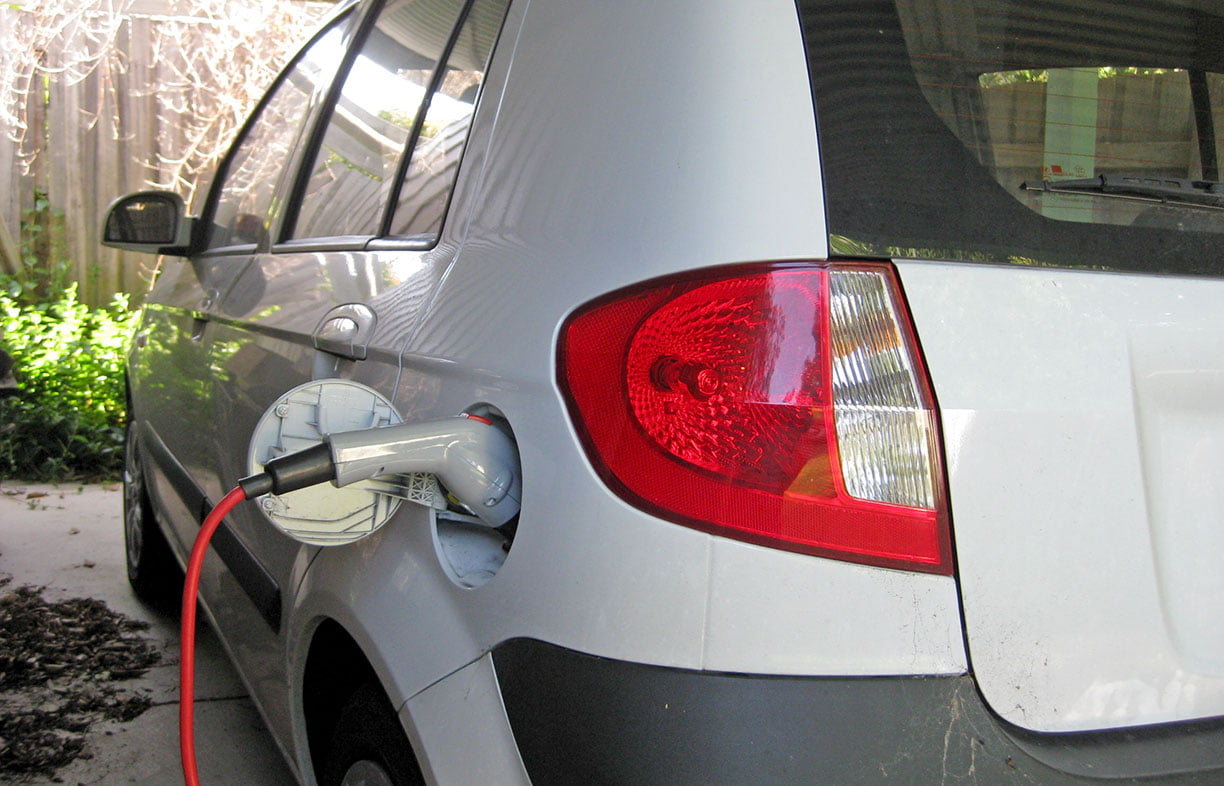
Bryce Gaton investigates the ethical and practical minefield, and potential solutions, to choosing a suitable electricity tariff for your electric vehicle.
For petrol and diesel vehicles, refuelling is a one-size-fits-all model. Whether you have time to fill up is irrelevant: you have to use the infrastructure provided by the big fuel companies, in their locations and at their prices.
One of the advantages of having an electric vehicle (EV), is that it puts more power in your hands. Charging can be done during the day, at night, from solar PV, at home, at work, at a friend’s, at the shopping centre or at a fast charger owned by one of several providers. Your new EV’s charging speed, running cost and carbon footprint are now your choice, not the big fuel companies’.
However, as the saying goes, “with great power comes great responsibility”. To make this new and exciting refuelling world best work for you, not only do you need a reasonable understanding of electricity pricing, you also need to explore and acknowledge some of your personal preferences and values.
In this article, I look at how much cost an EV will add to the typical household electricity bill, what sort of electricity cost structures (tariffs) are available, and how to analyse your EV charging needs and personal values to choose the most appropriate electricity tariff for you.
So how much will an EV add to my electricity bill?
An EV doing 10,000 km per year uses from around 1330 kWh (for a Renault Zoe) to 2080 kWh (for a Tesla Model X) per year. Using the example from Understanding EV emissions in Renew 143, a BMW i3 adds in the order of 1387 kWh of usage to your electricity bill per year. At an electricity rate of 24 c/kWh, this equates to about $333 additional electricity cost per year, assuming all charging is done at home and there’s no offset from solar. Tariff rates will vary, of course, depending on state, provider and tariff type, with both higher (e..g. peak of 50 c/kWh) and lower (e.g. off-peak of 12 c/kWh) rates available on some tariffs and in some places.
Putting that in terms of a percentage increase in your home bill can be tricky. One way to look at this is using Australian Bureau of Statistics (ABS) data. They estimate the energy use of an electric-only household to be around 19.2 kWh per day (source: ABS 2012 Australian Household Energy Consumption Survey). This equals around 7260 kWh per year.
Using this, the BMW i3 doing 10,000 km a year adds roughly 20% to the electricity usage of the average all-electric household. By the way, the average distance travelled in Australia by a passenger vehicle is currently 13,716 km. For this distance, the BMW i3 adds roughly 26%.
The take-home message is that the percentage of electricity for an EV depends on both your personal driving needs and general household usage (in my role as an energy auditor I have seen daily household usage varying between 2 kWh and 120 kWh) so coming up with averages is always going to be fraught!
To put it another way, a 10,000 km electricity bill of $333 for a BMW i3 replaces $1120 of fuel (assuming 8 L/100 km, 800 L over 10,000km, $1.40/L), not to mention the reduced servicing costs for an EV, such as eliminating expenditure on engine oil, filters, spark plugs etc.
What electricity tariffs are available?
Electricity is generally billed in two parts: the fixed (supply) charge for providing your connection to the grid and a usage component based on how much electricity you use.
Fixed supply charges vary a lot, depending on where you live and your retailer. Average prices are currently around $1 a day, but can range from 89 c to $1.20 or more.
Usage charges can be billed using flat or time-of-use rates. A flat rate charges a single rate per kWh, no matter the time of day or night. Time-of-use tariffs provide different rates at different times of day and possibly different days of the week, and even for different seasons. These aim to discourage use at peak usage times with a higher rate, and encourage use at off-peak times, with a lower rate. Some time-of-use rates are broken into peak and off-peak rates, some include a ‘shoulder’ rate, between peak and off-peak, and some have different rates on the weekends.
The times that peak, off-peak and shoulder rates apply can vary. Currently off-peak generally applies overnight, due to the lower loads at this time; but this could change as the grid generation profile changes. Currently, peak generally applies in the late afternoon and early evening, but can also apply at other times throughout the day, particularly in the early morning.
Another option is the AGL $1 a day electric car plan. This enables you to charge an electric vehicle at any time and for any length of time for a fixed charge of $1 per day.
[Another type of tariff is a demand tariff. We won’t discuss it here as it’s not widely offered at present, but if you’re on a demand tariff you should be aware that charging your EV at the wrong time could lead to a nasty shock when you get your bill.]
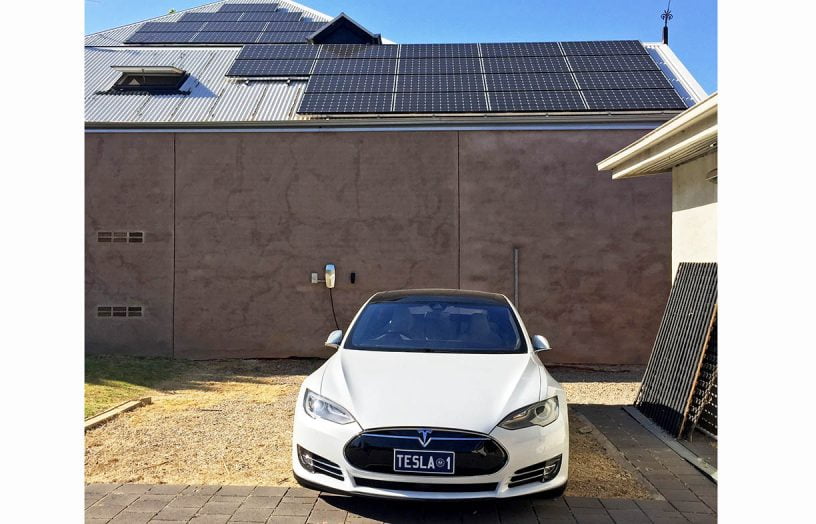
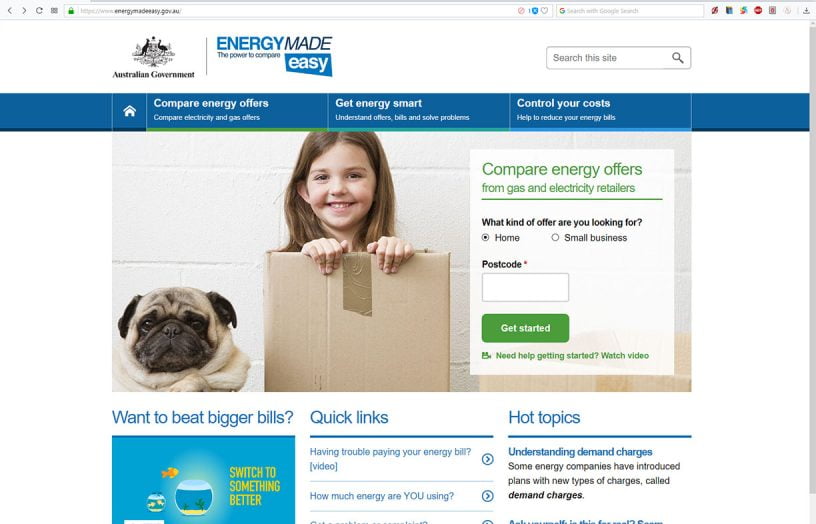
Which tariff will suit me?
So which tariff is the ‘right’ one when adding an EV to a household? The short answer is “it depends.”
The choice will depend on your personal preferences, values and needs, on the tariffs available to you, and your vehicle and household electricity usage patterns. You may want to minimise cost or carbon emissions from your electricity use, but you also need to consider how important convenience is to you: do you need or want to be able to charge at any time of the day? Another factor is how much effort you’re willing to put into monitoring and adapting your energy use to achieve lower cost and emissions. Whether you have solar PV will also come into the equation.
With a flat rate, it’s straightforward to work out the effect of adding an EV to your bills. A flat rate means that you can charge your car at any time of the day or night for the same cost—so if maximum convenience is what you want, this may be best for you.
A time-of-use tariff that suits your household’s usage could result in lower bills, but you’ll need careful analysis of your energy usage times, and the tariff itself, to determine whether it will reduce or increase your bills. If you can shift most of your electricity usage (whether EV or other household use) into off-peak or shoulder rates, this may be a good option.
To minimise your bills you will want to ensure that most of your EV charging happens at off-peak times, or can be covered by solar generation during the day. You need to carefully consider the timing of other significant energy users in your home as well. In summer, air conditioner use will likely occur during peak times, adding to your costs. In winter, if you use electricity for heating, consider when this is used as well.
There are advantages for the grid from time-of-use rates: shifting usage to off-peak rate times can reduce the need for peak power generation capacity by the electricity generators.
If you have a PV system, you may be able to charge the EV when the PV system provides enough output, thus avoiding peak rates. You’ll need a PV system sized at least to the maximum draw of the charger (for most currently available chargers, that’s between 2.4 kW and 7.2 kW)—and you’ll need to be aware of when your system is producing maximum power (in the middle of the day when it’s not cloudy) and charge at these times, though this is unlikely to fully cover your charging needs. Alternatively, you can use a smart charger like the Zappi EV Charger which can scale back the charger draw to just use excess PV: a PV diverter for EV charging.
Of course, you always need to compare the actual rates, not just whether a rate is flat or time-of-use; an off-peak rate that is close to the flat rate may not be a good option and vice-versa, a flat rate that’s close to the peak rate is unlikely to be a better option. You’ll also want to take into account the solar feed-in tariff rate if you have solar.
The ‘$1 a day’ rate is currently offered only by AGL for EV owners. If you don’t have solar PV and your EV use is likely to cost you more than $365 per year for charging at home, this could be a good choice cost-wise. Of course, it doesn’t provide any signals to you, the householder, as to when is the best time to charge from a grid perspective.
You will also want to consider the supply charge. The supply charge can be a big component of your bill for low-usage households, so always look at the supply charge as well as the per kWh tariffs.
Is there a sweet spot for EV charging tariffs?
You’ll need careful analysis to work out what’s best for you, but if you want to prioritise reducing your carbon footprint and cost, a good approach might be to run an energy-efficient household with a grid-connected PV system using a peak/off-peak time-of-use tariff, plus subscribe to ‘GreenPower’ or a similar scheme. That way you can charge your EV from your PV system during the day or recharge overnight on an off-peak tariff if you need to. Together they should allow for lower cost EV charging (assuming the tariff is well structured for your usage and you can offset a reasonable amount of the charging with PV), and give flexibility in charging times while still minimising your carbon footprint.
For the less budget-driven with a strong commitment to minimising their carbon footprint, installing an EV charging unit that senses your PV output and adjusts to this is a useful improvement. Adding a battery system to charge from the PV system during the day and which can be used to charge an EV at night improves the renewable energy component for EV charging, but at a significant financial cost as battery systems are not (yet) an economically viable choice where the grid is available. Note that the new time-based feed-in tariffs for PV and battery systems being touted for Victoria and NSW may change the economic viability of battery systems significantly, and affect the best time to charge an EV if you have solar. We will follow up on this when those tariffs become available.
Another option for higher annual travel distance EVs (where there is no PV system) is the AGL ‘$1 a day EV charging plan’. This plan currently allows for charging at any time and, if coupled with GreenPower or a similar renewable energy scheme allows for convenient (and cheaper) EV charging using renewable energy sources.
For the tech savvy (or those with good memories), choosing a time-of-use tariff structure based on a weekday/weekend cycle plus seasonal pricing could be a way to minimise use of peak load power and encourage generators not to install unnecessary additional capacity. But be warned: this option is really only suitable for the tech savvy who can afford to install (and understand) smart appliance management systems and apps, as well as love to be continually involved in managing their energy usage.
Choosing a supplier and tariff structure
Finding an actual supplier and tariff that’s best for you can be a time-consuming and off-putting process. The electricity retailers offer a revolving door of special offers that may change at any time, plus it can be somewhere between difficult and impossible to effectively compare plans. One way to navigate through this maze is to use a comparison website. But not all are equal—the commercial websites often only show the offerings from subscribing electricity retailers or promote those offerings which give them a commission.
The best approach is to use one of the government-based websites. In Victoria, this is here. Outside of Victoria, the National Energy Regulator offers a similar comparison site.
Both sites will ask you a series of questions about your likely household use, then offer a ranked selection of offers based on your answers. (Note that neither website includes a question about owning an EV!)
Independent advice is available from the consumer advocacy group Choice. It’s also worth considering how green the retailer is, in general, using the Green Electricity Guide. An energy consult from Renew (Renew’s not-for-profit publisher) can also help understand your current energy usage (by analysing your smart meter data) and predict the effect of adding an EV.
Summing up
Adding an EV to your home does not introduce a bogey man that transforms your electricity bill into a monster. An EV is only likely to add around 20% to 30% to your electricity usage, which in cost is more than offset by the savings in petrol and service expenses. Furthermore, this usage can be structured to occur at the least costly times and/or at the times when the most renewable energy is available.
Therefore, with the right electricity tariff structure and EV charging pattern, both the additional cost and carbon footprint of running an EV can be minimised.
To be happiest with your choice of tariff and EV charging regime, it is best to explore and acknowledge your personal environmental, spending and involvement priorities. By triggering a review of your existing electricity plan, buying an EV may even save you money on your existing (and possibly unsuitable) electricity tariff structure.
Electrical power is measured in watts (abbreviated as W). This is quite a small unit, so more usefully kilowatts (a thousand watts, abbreviated as kW) or megawatts (a million watts, MW) are used.
Electricity meters measure the rate at which you use electricity over many small increments of time. By multiplying the rate of usage by the time increment, the energy use for that time period is calculated. This is where the kilowatt-hour, or kWh, comes from. It’s a little more complex than that, but that is the basic concept.
For example, for an EV drawing 3.6 kW for one hour, you would be billed for 3.6 kWh. For that EV charging at 3.6 kW for six hours, that would be 3.6 x 6 = 21.6 kWh. As you can see, EV energy consumption can add up to a fair bit when charging for longer periods.
Related articles
 Transport & travel
Transport & travel
Petroleum is fast becoming a dirty word
John Hermans explains the negatives of the petroleum industry.
Read more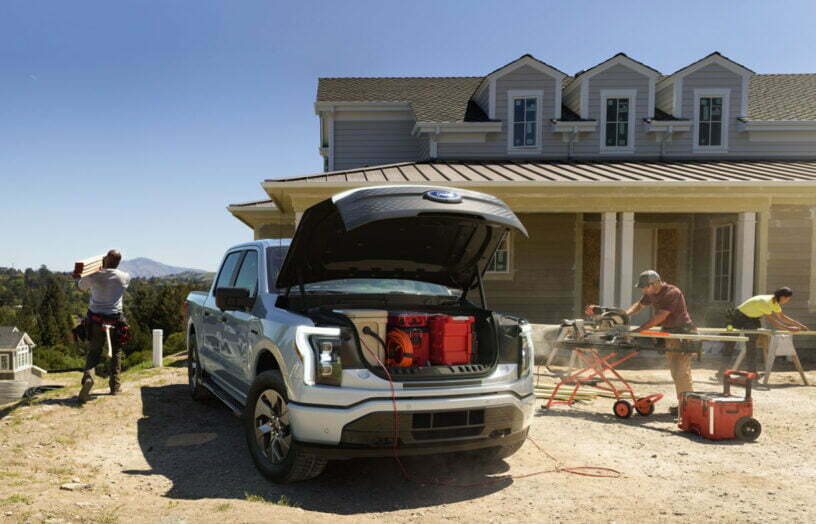 DIY
DIY
Bring on the electric ute
Bryce Gaton asks, will 2023 be the Australian ‘Year of the electric light commercial vehicle’?
Read more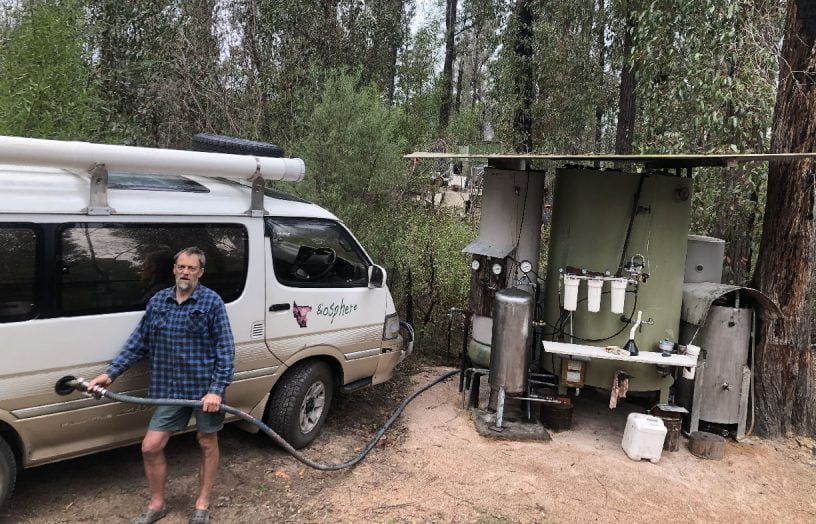 Transport & travel
Transport & travel
Biofuel vs battery
John Hermans gives his opinion on the best power source for electric vehicles.
Read more
